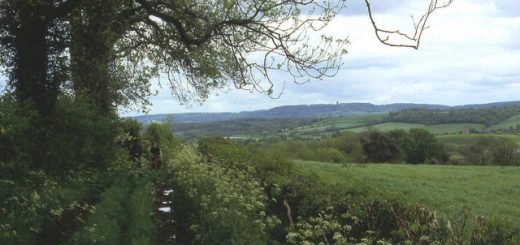The Witch of Easington
The following story was published in ‘Legends Superstitions of the County of Durham’ by William Brockie (1886). ‘Mrs. Mary Shaw, who died about three years ago, at the age of eighty -five, and who went to live at Easington when she was forty years old, was told by the elderly people of that old village that, in their young days, whenever the neighbouring gentry went out with the harriers to hunt over any of the farms round about Easington or Castle Eden, it always occurred that a hare started up and carried the dogs off the right scent, straight towards the former place, and somehow or other, without any of the usual doublings and windings, always managed to throw them out and get clear away. This happened so often that it was plain to be seen that there was something uncanny about this crafty member of the leporine genus. Somebody at length suggested that it must certainly be a witch, for witches, according to common credence, often take out-door exercise, in the form of such fleet creatures; and it was noticed that a certain cottage in the place used to he shut up on the days when the sports were held, as if its solitary inmate, an ill-natured wrinkled old hag, had gone abroad somewhere. She usually worked, indeed, in the fields, so that this need not have been wondered at, but her sour temper and ill habits had rendered her hateful to all her neighbours, so it was noways unnatural that suspicion should fall upon her to the purport that she was a witch, and consequently the identical mysterious hare. In order to test the truth of this, the master of the hounds was advised to get a black bloodhound, which must have been suckled at a womans breast, and set it on the uncanny creature’s track next time it appeared, then he was assured that its capture would be certain. A hound answering this description was accordingly got, and next field day it led the hunt. The hare had never been so closely followed up before. It made, as usual, direct for Easington, but instead of the hound being thrown off the scent, it kept up the pursuit until the old womans cottage door was reached. A little hole had been cut in that door, for the hens to go in and out at. The hare rushed forward to get through the hole, but the black hound was too close behind to let it get in unscathed. Just as it was darting through, he caught it on the haunch, and tore away a bit of the flesh. The huntsmen hurried up, and, finding the door fast barred, they burst it open. On entering they saw one of the strangest sights that ever human eye was set on. No hare was to be seen, nor any other living brute beast, but there sat the witch, bathed in sweat and shivering in agony, with the blood streaming from her on to the floor. The poor creature, we are told, confessed her guilt, which indeed, she could not easily have denied under the circumstances; and she earnestly begged pardon and asked to be forgiven. Her charm had been broken by the drawing of the blood, and her power was henceforth gone, even if she had wished to exercise it. The gentlemen charitably took pity on her, and left her there alone, to staunch her wound as she best knew how. Never after that were the Easington and Castle Eden harriers thrown off the legitimate scent by any such diabolic means; and never again were the gentlemen of the hunt privileged” if I may use the phrase “to follow their game in through a miserable widow woman’s bolted cottage door. Up to this time, when the crops of any of the neighbouring farmers failed, or when any mishap befell their cattle, the misfortune had always been set down to the witch-woman’s discredit, although it was impossible to bring the charge home to her, as had been done in the hare case. It was by field labour she earned her poor daily pittance, but she had generally to work quite alone, for none of the other field workers would go near her if they could help it. In seed time, turnip time, weeding time, hay time, harvest time, and all through the year, she was generally left to work in a place by herself; yet scarcely a day elapsed in which she did not give somebody offence with her vile randy tongue, while anyone who was rash enough to offend her ” and not many did so willingly ” were certain before long to repent what they had done. In short, like Nanny in Burns’s Tarn O’Shanter, she was a woman. who was admirably endowed with all those unamiable qualities of the virago that are best calculated to “keep a country side in fear.” She was a tall, lank, bony woman, with a masculine cast of features. She lived in the village for a few years after the great mishap befell her, shunned and detested more than ever. She never went to church or chapel, or performed any religious duty; yet when she died she was laid in consecrated ground in Easington churchyard, within the shadow of the lofty parish church, which, being situated on an eminence, serves as a seamark for passing mariners.
But, strange to tell, after it was fondly hoped that she had thus been laid at rest, her “power of witchery,” to use my informant’s phrase, was still sometimes seen, in the shape of white sheep, rolling over and over on the top of the churchyard wall. This sight was actually witnessed by Mrs. Shaw herself, one night when she was going down past the miller’s house to her own home at the Hall Walks. The cottage where the witch lived was situated in the Square, on the right hand side in going down from the church towards the sea, which is about two miles off. The door through which she darted to escape from the black hound was a great clumsy old-fashioned one.




Recent Comments